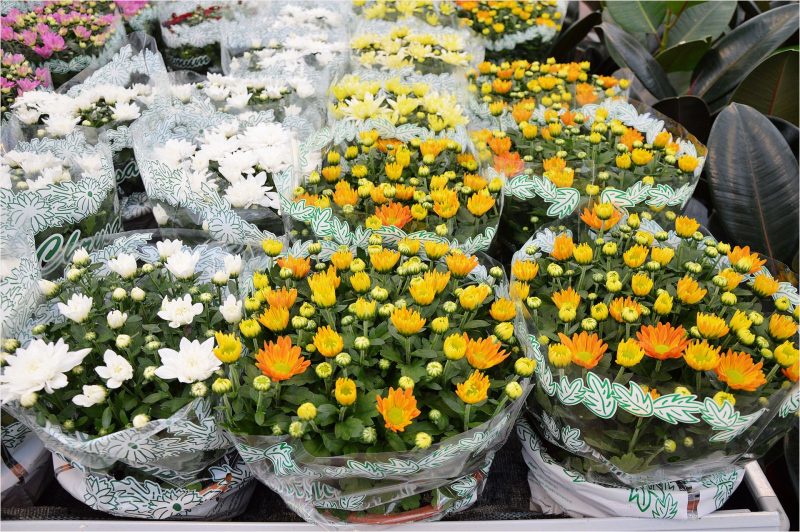Those who are new to gardening often wonder, “when should you induce flowering?” When growing plants, one of the things that you will look forward to is the day they will start to flower. However, you need to learn how to induce flowering if you’re someone who makes a living out of your plants and you want to harvest a little earlier than expected or you simply want to plant them indoors.
Several factors affect the plant’s ability to produce flowers – one of them being light and darkness. Typically, plants are divided into two categories according to their light and dark period requirements, or photoperiods. Short-day plants (Cannabis, rice, soybeans), as the name implies, only grow flowers during the time where the days are shorter and the nights are longer while long-day plants (carnation, pea, lettuce) only flower on the days where the days are longer and the night is shorter.

Plants grown outside will begin their flowering stage naturally. If you’re planting indoors, you’ll need to induce your plant’s flowering stage to make sure that it will produce an abundant harvest.
The Best Time to Induce Plant Flowering in Indoor Plants
For new growers or novice gardeners, one of the things they often wonder is when to start flower induction in their plants. There’s no standard rule for this as the perfect time to induce flowering primarily depends on the growers themselves. Typically, the ideal time that you should induce flowering in your plants is when they have established a strong root system.
Allowing your plant to vegetate will help make sure that they establish roots properly so that they can take up and store nutrients efficiently to support the flowering stage. The flowering stage, specifically, can be demanding and will need all the nutrients it can get either from the soil or fertilizers. However, if you’re in a hurry to harvest your flowers, you can start the floral induction earlier, but it won’t be able to produce as many flowers as when you let your plants grow bigger.
Short-day plants like Cannabis, for instance, can have an average vegetation time of at least 2-4 weeks. After the 4 weeks, the plant will have extended and established strong roots and is, therefore, ready for flower induction. However, some growers would also prefer their plants to remain in the vegetative state for longer to give the plant more time to grow and develop before inducing the flowering stage.
In long-day plants, horticulturist usually induce flowering by exposing them longer in lights. This means if the days are shorter, they’re usually placed under artificial lights. Short-day plants, on the other hand, are covered with opaque black cloth to induce flowering.
What are the Benefits of Growing Plants Inside a Hobby Greenhouse?
Hobby greenhouses are known to be one of the best places to grow your plants in. It offers numerous advantages that you wouldn’t get from traditional or garden planting. With a greenhouse, you can provide an optimal environment for your crops, thus, encouraging faster and better growth and development process.
Whether you have a semipro
greenhouse or a small functional one, you can benefit a lot from growing your plants inside a greenhouse. Here are some of the many advantages of growing plants inside a greenhouse:
Extended growing period
Greenhouses offer growers the chance to extend the growing season of a particular crop by manipulating the environmental conditions inside the greenhouse. Planting your crops inside a greenhouse allows you to control the temperature, humidity, and other environmental factors that will play a part in the survival and productivity of your plant. If they want to enjoy fresh harvest cold-season crop harvests in summer, they can place the plant inside the greenhouse and let it continue producing flowers and fruits.
Protection against plant pest infestations and predators
Among the many benefits of growing a greenhouse is that it allows protection against pests and plant predators like rodents. Since the area is enclosed with either a specialized plastic or fiberglass, diseased plants outside won’t get a chance to infect the plants inside the greenhouse. Other than that, the enclosure will also help protect the plants against plant-feeding predators like moles, squirrels, birds, or deer.
With that also comes the benefit of having to use little or no pesticides at all. Since you’ve given your plants protection against disease, you won’t have to use pesticides to treat your plants. This, then, translates to healthier produce.
Better crop quality
Since the enclosed greenhouses protect against pests, diseases, and predators, this would also lead to better crop quality. Plants that are not exposed to stress will be able to grow stronger and produce good fruits. If you’re lucky, it may even lead to an increase in your crop’s yield.
Avoiding plant damage caused by extreme weather conditions
One of the things that will damage your crop is extreme weather conditions. By growing inside a covered area, you’ll protect your plants from strong winds or hail storms. The greenhouse will also give warmth to your plants during seasons where the temperatures drop significantly.
When Should You Induce Flowering? Timing is Key
Whether you’re growing short-day plants or long-day plants, flower induction can be a great way to accelerate harvest time for your plants. As for the matter of when should you induce flowering, the best time to do it is when your plants have already established strong roots. With more strong and efficient roots, the plant will be able to supply the needed nutrients to support the flowering stage.
